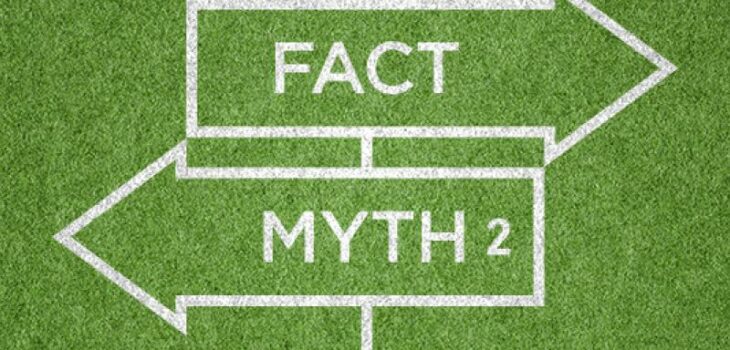We like to rush to extremes: either we cannot be torn away from the sofa and the TV, or we train hard for half a day in the fitness club. How to find a middle ground and keep yourself in good shape all the time? Woman’s Day dispels 7 myths about exercise and fitness.
Myth 1. The best time for exercise is in the morning.
This truth has been hammered into our heads for many years. However, health professionals take the exact opposite point of view. If physical activity is brought down on a barely awakened body, it will experience severe stress. As a result, it can even lead to heart problems. The most suitable morning exercise is light exercises and a contrast shower. And it’s better to postpone serious cardio or strength training until the evening. Some researchers believe that the most effective time for physical education is from 6 to 8 pm.
Myth 2. You can do any kind of sport to improve your health.
It is no longer a secret that professional sports actually cripple people. But amateur sports are not suitable for everyone. If you have a chronic disease lurking in your body, choosing the “wrong” sport, instead of benefit, you will harm yourself. Judge for yourself: swimming in the pool is contraindicated in chronic sinusitis, tonsillitis, pharyngitis, pyelonephritis, cystitis; cycling – with gastritis, stomach and duodenal ulcers, endometriosis, myoma. Playing badminton – for osteochondrosis, scoliosis, arthrosis; playing football – for cardiovascular diseases, kidney stones, liver, gall bladder. Before becoming an athlete, be sure to check with your healthcare professional.
Myth 3. The more and harder you exercise, the stronger your body will become.
Some health fanatics torture themselves for hours every day in gyms, overcoming pain and fatigue. Dear athletes, be aware that excessive physical exertion does nothing but harm to the body. Here is what scientists have to say about this. Under heavy loads, the body requires more oxygen, because of this, oxidative processes increase, and this leads to rapid wear of organs and general aging. German researchers have found that physical overstrain reduces the production of high density lipoproteins, which carry “good” cholesterol, and it protects us from atherosclerosis and heart ailments. American experts, in turn, came to the conclusion that “exercise for wear” in men lowers the amount of the male sex hormone testosterone. It becomes 80% less than that of those who play sports in moderate doses. In physical labor strikers, the number of spermatozoa also decreases and libido gradually fades away. Do not overwork yourself! It is enough to engage in physical education 2-3 times a week for 1-2 hours. And, of course, as soon as you feel pain while doing an exercise, stop exercising.
Myth 4. The most useful thing is to work out in a fitness club.
No one argues that following a healthy lifestyle in the company of like-minded people is much more pleasant than alone. However, regular visits to the fitness club are more of a fashion trend than a brutal necessity. If you do not have money for a fitness membership, this is by no means a reason for despair, and even more so as an excuse that now you cannot maintain a normal physical shape. Exercise in the park, at home. Walking is a great health-improving activity. By the way, many doctors are sure that physical education in clean fresh air is much more useful than training in a fitness center with its air-conditioned air. And some specialists generally took up arms against simulators. They say, for example, that men should be very wary of an exercise bike: when exercising on it, the body weight with tremendous force presses on the most delicate and unprotected organs in men, blood vessels are squeezed and stop pumping blood, and this can cause inflammatory diseases, and decreased sex drive. Listen to such an authoritative opinion. Arnold Schwarzenegger said: “Trainers are pampering.”
Myth 5. Children should be forced to exercise.
American physiologists conducted an interesting experiment. Some mice were forced to spin in a wheel. Others ran on the wheel of their own accord. So, by the end of the experiment, the immunity of the first group of unfortunate animals weakened, and in the second, on the contrary, it increased. Conclusion: there is no sense in the hated physical exercises. Find out with your child what kind of sport he would like to play, discuss this option with the pediatrician. You will definitely find the type of physical activity that will benefit the child’s health and will be a joy to him. By the way, adults, too, in no case should be engaged through force and not get pleasure from this business.
Myth 6. If you can’t do physical education regularly, there will be no benefit from one-time classes.
This is a typical lazy excuse. If there is no way to streamline your sports life, exercise as soon as you have time. Be aware that even the usual half-hour walk, taken three times a week, reduces the risk of hypertension, atherosclerosis, vascular disease and heart disease.
Myth 7. They get duller from training.
We have already agreed with you not to get involved in professional sports, then you simply will not have time for any other activities: reading books, going to exhibitions, etc. On the other hand, moderate training, on the other hand, adds to the mind. British researchers have found that after exercise, the brain begins to produce endorphins, which stimulate the brain, developing creative thinking. By the way, endorphins are called hormones of joy, so you are guaranteed a good mood.










